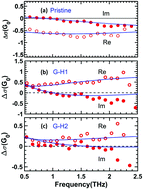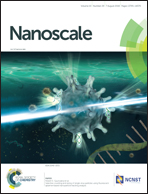Tunable terahertz photoconductivity of hydrogen functionalized graphene using optical pump-terahertz probe spectroscopy
Abstract
We show that the terahertz photoconductivity of monolayer graphene following 800 nm femtosecond optical pump excitation can be tuned by different levels of hydrogenation (graphane) and provide a quantitative understanding of the unique spectral dependence of photoconductivity. The real part of terahertz photoconductivity (ΔσRe(ω)), which is negative in doped pristine graphene, becomes positive after hydrogenation. Frequency and electronic temperature Te dependent conductivity σ(ω, Te) is calculated using the Boltzmann transport equation taking into account the energy dependence of different scattering rates of the hot carriers. It is shown that the carrier scattering rate dominated by disorder-induced short-range scattering, though sufficient for pristine graphene, is not able to explain the observed complex Δσ(ω) for graphane. Our results are explained by considering the system to be heterogeneous after hydrogenation where conductivity is a weighted sum of conductivities of two parts: one dominated by Coulomb scattering coming from trapped charge impurities in the underlying substrate and the other dominated by short-range scattering coming from disorder, surface defects, dislocations and ripples in graphene flakes. A finite band gap opening due to hydrogenation is shown to be important in determining Δσ(ω).



 Please wait while we load your content...
Please wait while we load your content...